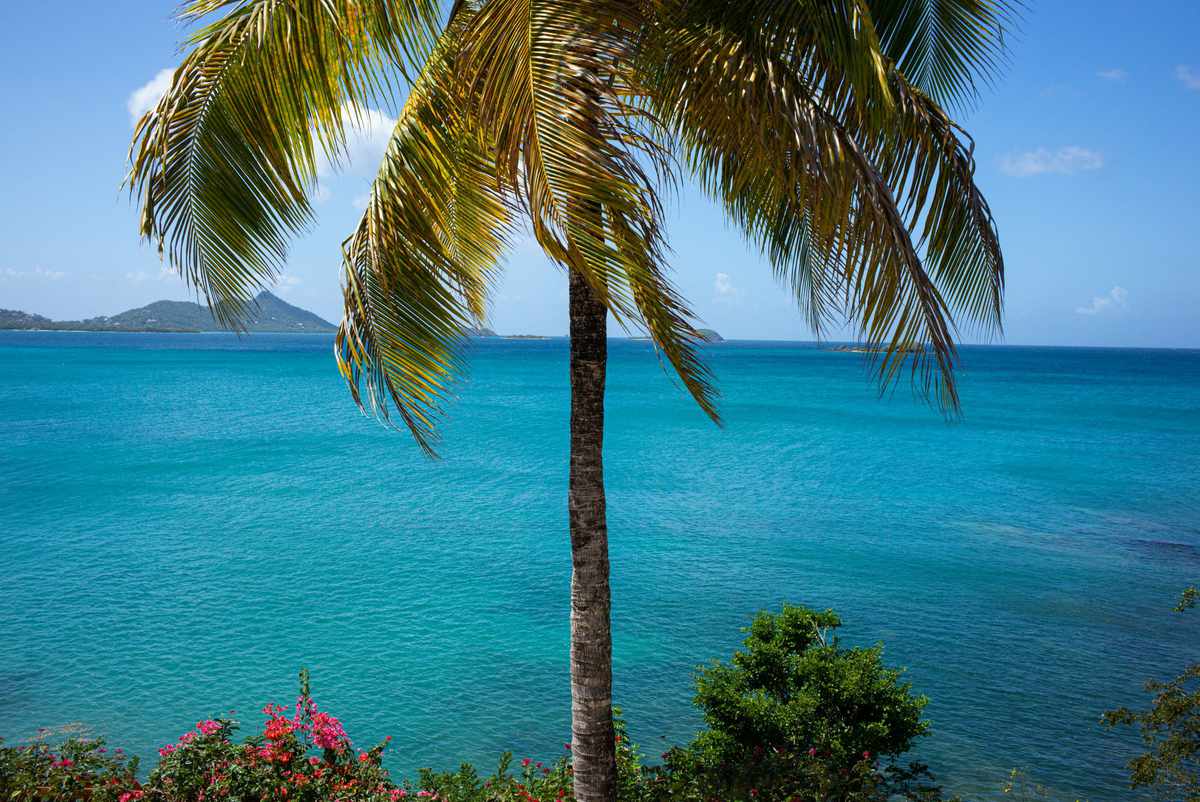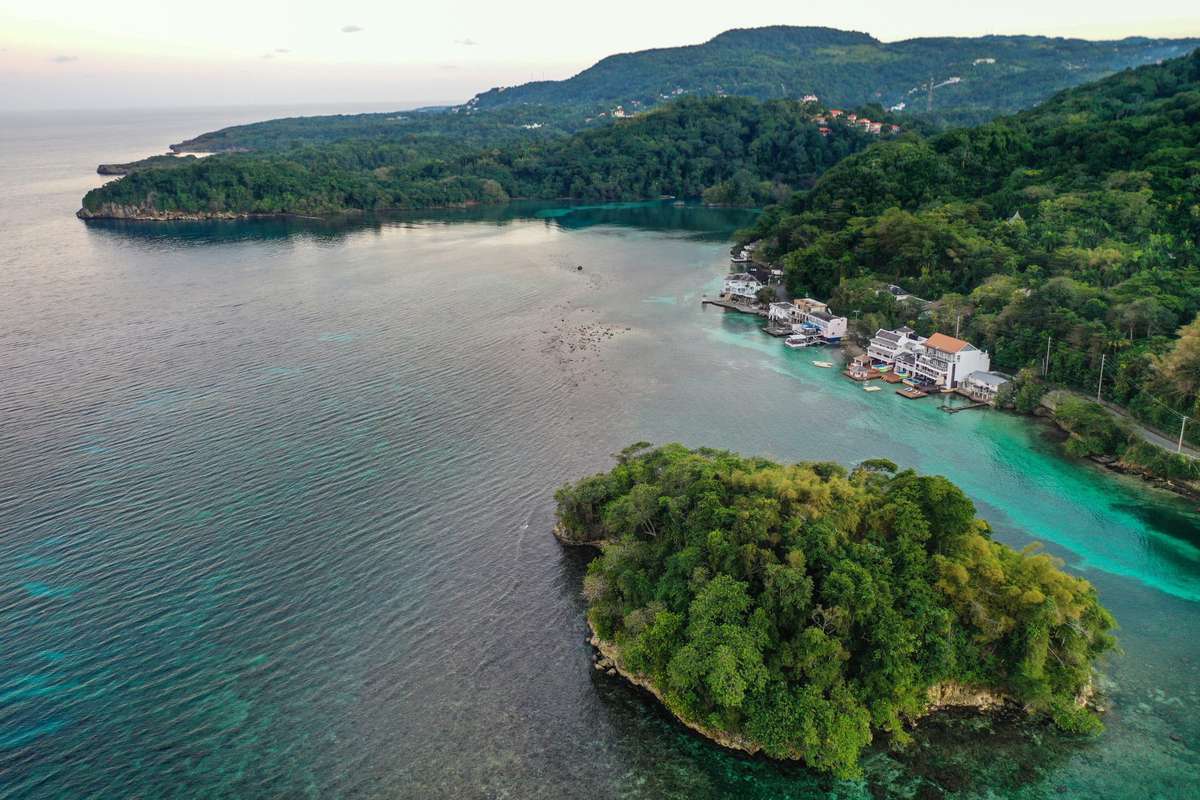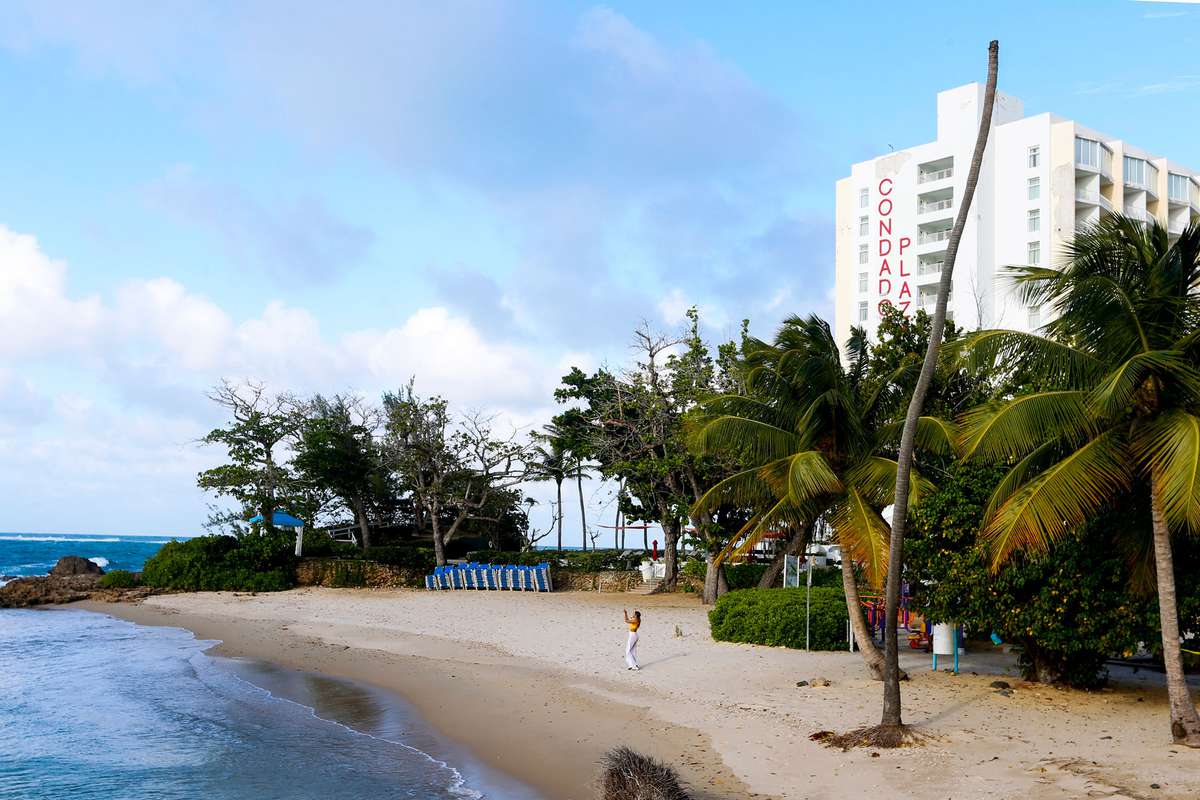Dreaming of Heading to the Caribbean!
Here is every Island’s Plan for Reopening
As travel was abruptly put on hold earlier this year, recent signs of reopenings and restrictions lifting around the world have given sun chasers everywhere a sign of hope that lounging on a white sandy beach while looking out at shimmering turquoise water may not be too far off.
Specifically, the Caribbean islands have laid out their plans for a “new normal” among locals as well as welcoming back visitors after being forced to take a pause as the coronavirus pandemic swept across the globe.
In the interim, many islands — like Aruba and Saint Lucia — took the virtual alternative and provided dreamy beach island vibes online, but we all know that nothing can replace the real thing. Below is each island’s reopening plan along with the number of confirmed cases of coronavirus each has recorded since the beginning of the outbreak, according to Johns Hopkins University.
Anguilla
Number of cases: 3
The British overseas territory has closed its #Anguilla airport and ports until at least June 30, according to the UK government. For locals, however, restrictions started to lift on April 30, allowing up to 25 people to gather while practicing social distancing, according to the COVID-19 guidelines.
The island, which has been named the best in the Caribbean by Travel + Leisure readers several years in a row, is known for its scenic hiking, sea turtles, and bird life.
Antigua and Barbuda
Number of cases: 26
#Antigua and #Barbuda opened its borders on June 1 in a phased plan that includes reopening the international airport, according to the government. Visitors are required to wear a mask in all public places. Additionally, visitors must take a COVID-19 test 48 hours prior to arrival and be able to present documentation of negative results. If they’re unable to do so they must pay for a test locally or agree to quarantine at a hotel for 14 days.
Aruba
#Aruba, a territory of the #Netherlands, expects to reopen its borders between June 15 and July 1, according to the Aruba Tourism Authority. On May 25, the island allowed outdoor restaurants to reopen but remains under a nightly curfew.
Aruba has implemented a cleaning and hygiene certification program for tourism-related businesses to reassure tourists when they do return. This includes extra cleaning during tasks like handling luggage as well as plexiglass barriers at desks and the use of digital keys.
In the meantime, the island is offering a dose of wanderlust from home with a virtual tour, including a 30-minute calming video of the sights and sounds of Aruba.
Bahamas
Number of cases: Just over 100
The #Bahamas hopes to reopen to commercial travel on July 1, according to the Bahamas Ministry of Tourism & Aviation, with visitors only able to go to the islands where COVID-19 has been contained (including Cat Island and Abaco). Currently, international arrivals are restricted and many resorts and hotels are closed to international travelers.
On June 2, the Bahamas allowed non-essential storefront businesses to open on weekdays from 9 a.m. to 5 p.m. on certain islands, including Grand Bahama, as part of Phase 3 of its reopening plan, according to the Office of the Prime Minister. Restaurants, however, are still limited to curbside pickup and delivery, and other facilities remain closed.
Barbados
Number of cases: 92
#Barbados requires all arriving passengers to quarantine for 14 days, according to the U.S. Embassy in Barbados.
On June 1, the island reopened retailers, parks, and dining in restaurants, according to the Barbados Government Information Service. A day later, the island opened beaches from 5 a.m. to 6:30 p.m., but picnicking was still banned. Businesses that open are required to implement health protocols, including temperature checks.
Bonaire, Sint Eustatius and Saba
Number of cases: 7
Borders for the #Dutch islands are currently closed, and the #Bonaire airport will remain closed through at least June 15. On #SintEustatius, restaurants and bars were allowed to reopen with capacity restrictions on May 29, and hotels can open but leisure flights are still restricted. #Saba’s borders remain closed as well, but the island lifted its “lock-down” order on May 11, according to the U.S. Consulate General in #Curacao.
The British Virgin Islands
Number of cases: 8
The #British overseas territory will reopen its borders in June for returning residents and citizens who will each be subject to a 14-day quarantine, according to the Government of the #Virgin Islands. The islands have a nightly curfew, according to the UK government. Beaches, however, are open from 6:00 a.m. to 3:00 p.m.
Cayman Islands
Number of cases: 150
Airports in the #Cayman Islands, a British overseas territory, will remain closed for international leisure and non-essential travel until at least Sept. 1, according to the Cayman Islands government. Seaports will remain shut as well.
Currently, the island has a strict nightly curfew. Beach access is limited to certain days, based on the letter of people’s last names, and exercise is limited to groups of two people for up to two hours. People have to wear face masks in public places, and shopping at supermarkets is staggered based on people’s last names.
Cuba
Number of cases: Just under 3,000
#Cuba has closed its airport until at least June 30, according to the U.S. Embassy in Havana. Southwest Airlines had initially said it planned to start flying from Tampa to Havana on June 7, but the airport will still be closed. In addition, American Airlines has said it will start operating flights to the island on July 7, The Miami Herald reported.
While U.S. citizens are not allowed to travel to Cuba for tourism, they are allowed to legally travel there under several criteria, including “Support for the Cuban People,” which requires that travelers have a “full-time schedule” of activities that “enhance contact with the Cuban people, support civil society in Cuba, or promote the Cuban people’s independence from Cuban authorities.”
Curaçao
Number of cases: 20
The #Curaçao International Airport is closed to arriving passengers, according to The Curaçao Tourist Board. Additionally, while Curaçao, a territory of the Netherlands, has lifted its “Shelter in Place” order, the island still has a nightly curfew. Restaurants have reopened for dine-in, but groups larger than 25 people are not allowed.
Dominica
Number of cases: 18
#Dominica has closed its borders to commercial and private flights or boats, according to the U.S. Embassy in Barbados. The country also has a curfew in place at night.
Dominican Republic
Number of cases: More than 17,700
The #DominicanRepublic has closed its borders to land, sea, or air arrivals, according to the Dominican Republic Ministry of Tourism. Additionally, masks are required in all public places and a curfew is in place at night, according to the U.S. embassy there.
Grenada
Number of cases: 23
#Grenada is looking at June 30 as a possible date for re-opening its borders, according to its prime minister. In order to do so, he said procedures have to be in place, including ensuring hotels have sanitation protocols. Charter flights, however, may resume earlier than that.
Grenada remains under a state of emergency, according to NOW Grenada, but beaches are accessible during morning hours.
Guadeloupe
Number of cases: 162
The quarantine on the #French island was lifted on May 11, the #Guadeloupe Islands Tourist Board shared with Travel + Leisure, but the island still remains closed to tourism.
In the meantime, you can virtually dive into the sights and sounds of Guadeloupe through the tourism board’s dreamy Instagram stories.
Haiti
Number of cases: More than 2,200
On June 2, Airlines was authorized to fly from Port au Prince to Fort Lauderdale, according to the U.S. Embassy in #Haiti, which added it was unaware of “any flights from Haiti to the United States after June 02 or if any flights will be authorized in the future.”
In March, the country shut its land border with the Dominican Republic and suspended flights from several areas, including Europe and Canada, according to the Miami Herald. There is a nightly curfew in place.
Jamaica
Number of cases: More than 580
Order in Place: #Jamaica allowed most people to return to work on June 1 and bars have been allowed to reopen with capacity restrictions, according to the Jamaica Tourist Board. A nightly curfew, however, remains in place.
While the Jamaica Information Service has said protocols are being reviewed to reopen tourism, Southwest has said it intends to resume flights from Baltimore and Orlando to Montego Bay on June 7.
Martinique
Number of cases: 200
All arriving passengers to the #French island of #Martinique, except for those from Guadeloupe, must quarantine for 14 days, according to the Prefecture of Martinique. Additionally, the island has a nightly curfew in place, according to the U.S. Embassy in Barbados.
On March 23, the island closed the airport to most international flights, as well as canceled scheduled cruise stops, the Martinique Tourism Authority noted.
Montserrat
Number of cases: 11
The #British overseas territory has a nightly curfew and gatherings are limited to four people or less, according to the UK government. On May 22, the government of #Montserrat allowed restaurants to open for delivery or take-out services and for salons to reopen for appointments.
Puerto Rico
Number of cases: More than 3,900
Order in Place: #PuertoRico started reopening businesses and public areas like beaches for exercise and restaurants with capacity restrictions on May 26. While the island’s phased reopening has started, a nightly curfew remains in effect and face masks are mandatory in public.
All visitors to the island may be asked to self-quarantine for 14 days, regardless of symptoms and all commercial flights are being diverted to San Juan, according to Discover Puerto Rico. Rapid COVID-19 testing is also being offered there. Additionally, hotels on the island remain open, but amenities like pools are closed.
St. Barthélemy
Number of cases: 6
This island, commonly known as #StBarts, had a deconfinement plan in place from May 11 to June 1, which allowed people to be in public spaces if social distancing was observed, according to the U.S. Embassy in Barbados.
But if you can’t get to the beautiful island right now, you can feel like you’re there with a creative Zoom background (just don’t forget a glass of French wine to go with it).
St. Kitts and Nevis
Number of cases: 15
The border of #SaintKitts and Nevis is currently closed to international travel, according to the Prime Minister.
Additionally, the island has a nightly curfew and while residents can check out the beach, they have to do so during early morning weekday hours only, according to the U.S. Embassy in Barbados. Face masks are required in public areas.
Sint Maarten
Number of cases: 77
The #Dutch territory is currently closed to tourism and is “very much dependent on the health situation of other countries COVID-19 to be under control before we can feel comfortable opening our borders to the world and traveling Public,” according to the Prime Minister.
On May 11, #SintMaarten lifted its “shelter-in-place” order, according to the U.S. Consulate General in Curacao, but a nightly curfew remains in effect.
St. Martin
Number of cases: 41
Like its #Dutch counterpart, #SintMaarten, there are no commercial flights to get to the French side of the island.
St. Lucia
Number of cases: 18
#SaintLucia started welcoming visitors back to the island on June 4, requiring them to show proof of a negative coronavirus test taken within 48 hours of boarding a flight. Visitors will also have to wear face masks and health authorities could conduct temperature checks on arriving passengers. In addition, the island is requiring hotels to apply for a COVID-19 certificate from the government that addresses several safety protocols like cleaning measures and enforcing social distancing.
Businesses on Saint Lucia have been allowed to reopen, but they must have protocols in place for social distancing and disinfecting surfaces.
And if you can’t get there immediately, you can virtually escape to the islandthrough an Instagram mini-series.
St. Vincent and the Grenadines
Number of cases: 26
While #SaintVincent and the #Grenadines’ airport remains open, there are no commercial flights, according to the U.S. Embassy in Barbados. All people arriving from several countries, including the U.S., are subject to a 14-day quarantine.
Trinidad and Tobago
Number of cases: 117
#Trinidad and #Tobago entered Phase 2 of its reopening plan in May, according to the U.S. Embassy there. While street vendors have been allowed to resume and restaurants are open for take-out, dine-in is not. Additionally, outdoor exercise is allowed, but face masks must be worn.
Turks and Caicos Islands
#Turks and Caicos plans on reopening to tourists on July 22, utilizing new protocols for things like personal protective equipment and training, which officials said will be detailed in the coming weeks. The Grand Turk Cruise Center, however, will remain closed until August 31.
The British overseas territory initially closed its borders in March, shutting the airport to both regional and international flights and closing seaports, according to the government. There is currently a nightly curfew in place on the islands, face masks are required to be worn in public places, and on June 5, Turks and Caicos will allow retail businesses to reopen. Restaurants are expected to reopen on July 6.
United States Virgin Islands
Number of cases: 70
The U.S. Virgin Islands reopened to tourists on June 1 with rules in place for cleaning and housekeeping protocols as well as taxis. While the island is now welcoming visitors, however, the U.S. territory remains under a state of emergency through July 11. #USVI
People on the island are required to wear masks when entering a business, gatherings are limited to 10 people, and bars and restaurants are limited to 50 percent capacity restrictions, according to the territory.
#CaribbeanVacations #FriendsTravelWestHollywoodCa90069
EMIL #JessKalinowsky JESS@FriendsTravel.com 24|7|365
We recommend traveling #LaborDay, #Thanksgiving, #Christmas, and #NewYears and into 2021.
BUT we will verify THE most current information once you have chosen your destination and travel dates.





